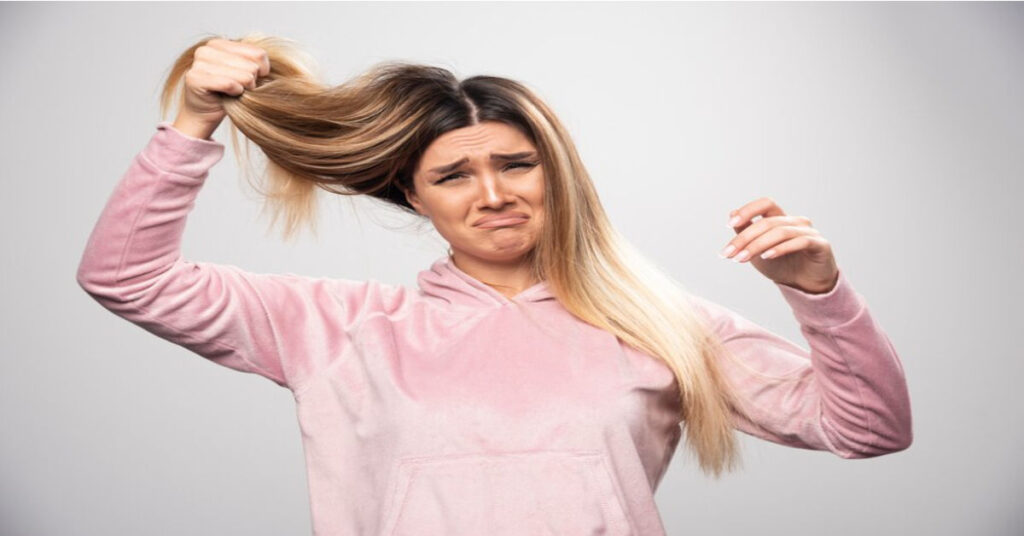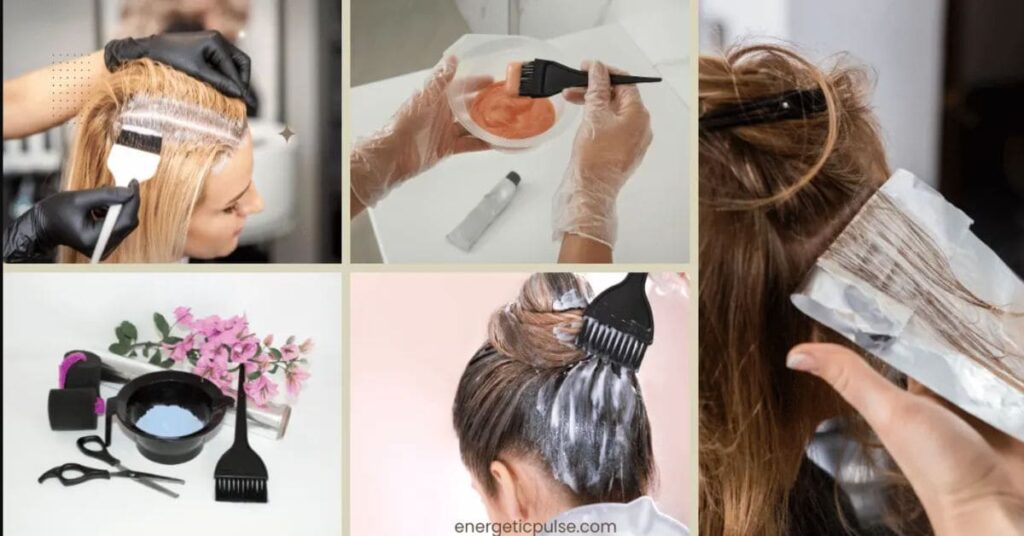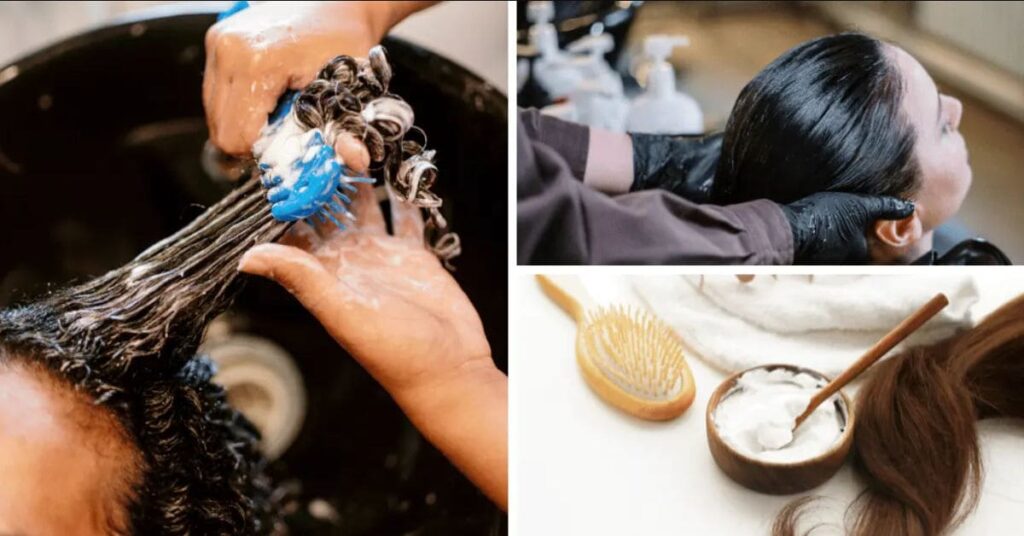A common and transforming beauty technique that lets people show off their individuality and sense of style is hair coloring. But in the midst of the quest for colorful hair, there is a less-discussed area of possible issues: allergic reactions to hair coloring chemicals. It’s essential to comprehend how allergies affect hair coloring if you want to have a fun and safe experience. This article explores the subtleties of allergic responses, from identifying common allergens to investigating preventive methods, so that your trip to a new hair color is not only fashionable but also free of unforeseen issues. Continue reading to learn more about the subtle ways that hair coloring may affect your health and to get helpful advice for a stress-free coloring experience.
Common Allergens in Hair Coloring Products

Products for coloring hair frequently include a variety of chemicals that help them change color. Regretfully, a few of these ingredients may function as strong allergens, causing negative reactions in some people. In order to prevent and treat allergic reactions during the hair coloring process, it is essential to understand these frequent allergens.
Para-Phenylenediamine (PPD):
Para-phenylenediamine is one of the most common allergens in hair dyes (PPD). In most formulations, this chemical is the cause of the persistent color. That being said, PPD has been connected to allergic contact dermatitis, which manifests as skin irritation, redness, and itching. Traditional hair dyes should be used with caution by those who are sensitive to PPD.
Ammonia:
Ammonia is commonly found in hair colorants as it helps open the hair cuticle, allowing color to penetrate effectively. Despite its practical function, ammonia can be harsh on the scalp and may lead to irritation. Individuals with sensitive skin or pre-existing scalp conditions should be mindful of ammonia content in hair coloring products.
Hydrogen Peroxide:
Another essential ingredient in hair coloring formulas is hydrogen peroxide, which lightens hair and activates color molecules. Higher concentrations can result in allergic reactions and skin irritation, even though they are usually harmless in prescribed dosages. Knowing the amount of hydrogen peroxide is vital, particularly for people who have a history of skin sensitivity.
Resorcinol:
An aromatic alcohol called resorcinol is frequently added to hair colors to improve color durability. It may, however, result in allergic responses, especially in people with sensitive skin. If you want to prevent allergic reactions, you need to be aware that hair coloring products include resorcinol.
Fragrances and Additives:
Fragrances and extra ingredients are frequently added to hair coloring products to enhance its texture and aroma. These could improve the user experience, but they could potentially include allergies. Those who are more sensitive to fragrances should use hypoallergenic or fragrance-free products in order to reduce the possibility of negative responses.
Knowing these frequent allergens when navigating the world of hair coloring enables people to make decisions that are in line with their skin sensitivity and general well-being. The following section will explore the several ways that allergic reactions can appear, offering guidance on identifying and managing possible problems both during and after the coloring process.
Types of Allergic Reactions
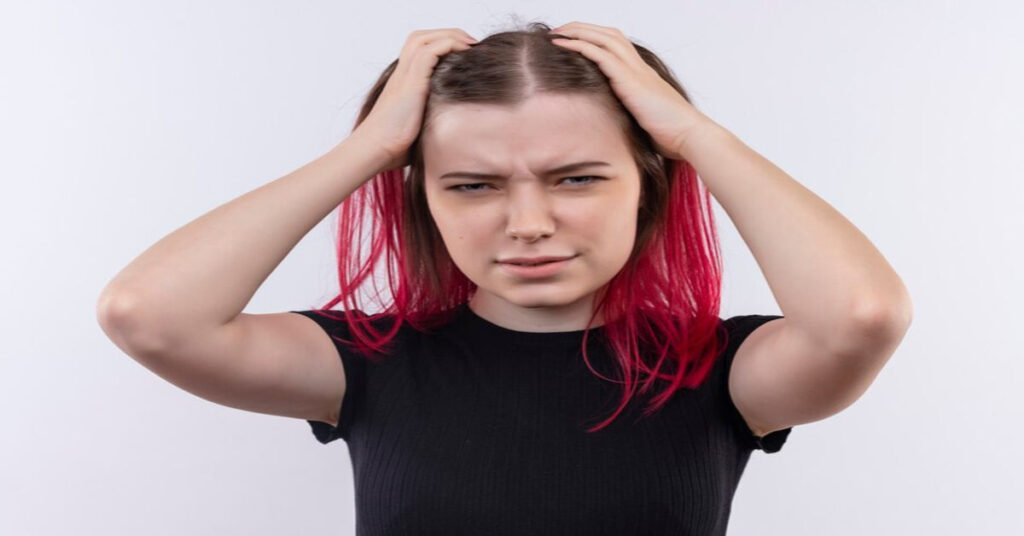
As people undergo the transformational process of dyeing their hair, they may experience a range of allergic reactions, from minor pain to more severe symptoms. It is essential to identify these responses in order to take timely action and make well-informed decisions. The following are the main categories of allergic responses linked to hair coloring:
Contact Dermatitis:
The frequent allergic reaction known as contact dermatitis is characterized by skin irritation, itching, and redness. It happens when allergens like PPD or resorcinol found in hair coloring products come into direct contact with the skin. After application, symptoms could show up hours or days later and last until the allergen is eliminated.
Eczema:
Atopic dermatitis, often known as eczema, can be brought on by contact to specific chemicals in hair color. Eczema-prone individuals may have red, itchy, and inflammatory skin, which is frequently restricted to the scalp and adjacent areas. Finding and avoiding particular allergens in hair coloring products is essential to managing eczema.
Swelling and Redness:
Localized swelling and redness, especially on the face and scalp, can result from allergic responses. The body’s immunological reaction to allergens in the hair dye formula could be the cause of this. Although swelling might vary in intensity, if it becomes noticeable or spreads, you should see a doctor right once.
Hives (Urticaria):
Allergies can cause hives, which are elevated, itchy welts that develop on the skin. Hives on the face, neck, or scalp may appear when coloring hair. It’s critical to differentiate hives from ordinary skin irritation and to consult a doctor if symptoms persist or are combined with other allergic reactions.
Anaphylaxis:
Anaphylaxis is an acute and potentially fatal illness that can result from severe allergic reactions to hair dyeing, albeit these cases are uncommon. Breathing problems, facial and throat puffiness, and a decrease in blood pressure are among the symptoms. In these situations, prompt medical intervention is essential, highlighting the value of patch testing and identifying allergy symptoms early on.
People who are aware of the range of allergic responses can recognize signs early on and take the necessary measures. The next sections will explore the particular symptoms linked to these responses, assisting readers in identifying possible problems before, during, or after hair coloring.
Symptoms of Allergic Reactions in Hair Coloring
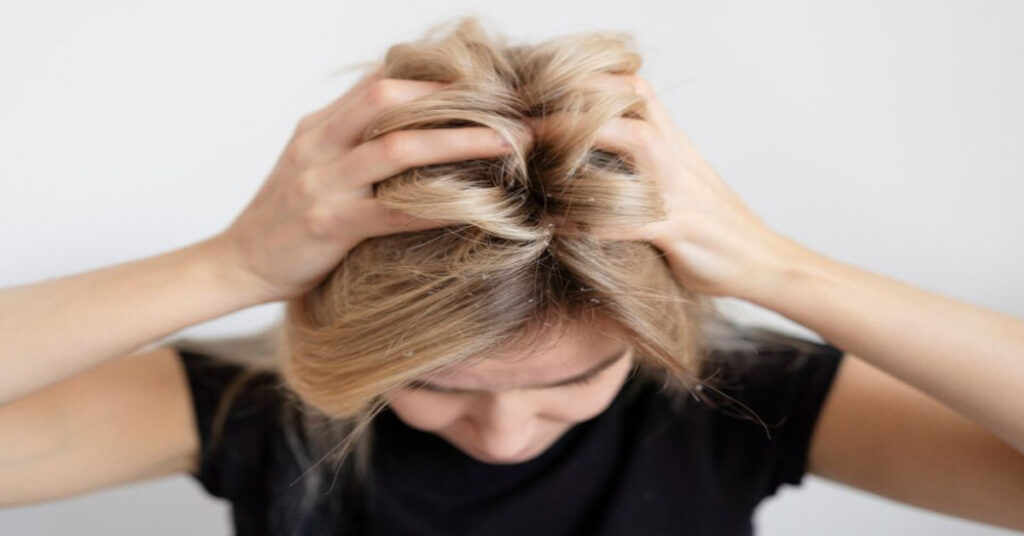
It is essential for those who want to continue coloring their hair in a safe and fun way to recognize the signs of allergic reactions. Even though the intensity of these symptoms can vary, being aware of the possible red flags enables prompt action. The following are the main signs of allergic responses to hair coloring:
Itching and Irritation:
Itching and discomfort on the face, neck, or scalp might be one of the first indications of an allergic reaction. People may have a constant itch to scratch, which makes them uncomfortable and red. Early detection and management of itching can help stop allergy symptoms from getting worse.
Redness and Rash:
Oftentimes, allergic reactions cause skin rashes and redness. This may happen right where the hair dye was applied or it may spread to nearby places. Determining the severity of the allergic response requires closely observing the emergence of red patches and rashes.
Burning Sensation:
A bad reaction is indicated by a burning or stinging feeling on the scalp. This soreness could get worse while dying your hair or last long after. In the event that a burning feeling develops, people should rinse off the dye right away and consult a medical practitioner for advice.
Swelling of the Scalp or Face:
One worrying sign of an allergic reaction is localized swelling on the face, neck, or scalp. Mild to severe swelling is possible, and redness may accompany it. Attention must be given very quickly, particularly if breathing becomes difficult or the swelling increases quickly.
Blistering and oozing:
Blisters and fluid leaking from the affected areas are possible side effects of severe allergic responses. This is an indication of a more severe reaction and calls for quick medical attention. Preventing the worsening of these symptoms requires avoiding additional exposure to the allergen.
Systemic Symptoms:
An occasional allergic reaction may result in systemic symptoms such as nausea, headaches, and dizziness. These signs could point to a more serious allergic reaction and call for immediate medical assistance. To avoid future difficulties, people with systemic symptoms should get care right away.
Giving people the ability to identify these signs helps them make wise judgments both before and after the coloring process. The risk factors for allergic reactions will be discussed in the following part, along with information on who may be more vulnerable to these unfavorable reactions.
Risk Factors for Allergic Reactions
There are several characteristics that make it more likely for people to have allergic responses to hair coloring products. Prior to beginning the hair coloring process, it is crucial to comprehend these risk factors in order to take preventative action and make well-informed decisions. The following are important factors that raise the possibility of allergic reactions:
Previous Allergic Reactions:
People who have experienced allergic reactions in the past, especially with hair coloring chemicals, are more vulnerable. Previous sensitivities could mean that you are already sensitive to some of the chemicals in hair color, so you should use extra caution when applying it again.
Sensitivity to Specific Allergens:
Certain people may be known to be sensitive to certain allergens, such PPD or ammonia, which are frequently present in hair coloring formulas. People can select items with different formulations or chemicals that are less likely to cause an allergic reaction by being aware of their own sensitivity.
Skin Conditions:
Skin disorders such as dermatitis or eczema that preexist can make a person more vulnerable to adverse responses when dyeing their hair. Skin barriers that are damaged or impaired may allow allergens to be absorbed more easily, raising the possibility of negative reactions. Before using hair dyes, people with pre-existing skin issues should see a dermatologist.
Frequency of Hair Coloring:
Regular use of hair coloring products may increase the likelihood that over time, sensitivities will arise. Applying an allergen repeatedly raises the cumulative exposure to it, which may cause allergy reactions even in people who did not show sensitivity at first.
Immune System Health:

The body’s reaction to foreign chemicals is influenced by the immune system’s general health. People whose immune systems are weakened, either by disease or medicine, may be more vulnerable to increased allergic reactions. It is imperative that these people seek medical advice before using hair coloring products.
Age and Gender:
According to studies, the incidence of adverse reactions to hair coloring may vary depending on an individual’s age and gender. It has been noted that women and older people are more vulnerable. These variables highlight the significance of individual variance and the demand for tailored considerations, even though they are not perfect predictors.
Being aware of these risk factors enables people to determine their own level of allergy susceptibility and to make well-informed decisions about coloring their hair. The next section will address precautions to reduce the likelihood of allergic reactions prior to full-blown hair coloring applications, especially the importance of patch testing.
Prevention and Patch Testing
Proactive steps are necessary to prevent allergic reactions to hair coloring, and one important way to reduce the likelihood of negative reactions is through patch testing. This section highlights the importance of patch testing prior to complete hair coloring applications and offers important preventive techniques.
Patch Testing Explained:
Applying a tiny amount of the hair coloring product to a discrete region of skin—usually the inner forearm or behind the ear—is known as patch testing. This lowers the possibility of widespread adverse reactions by enabling people to evaluate how the substance affects their skin before using it on a larger area.
Timing of Patch Testing:
It is necessary to carry out a patch test at least 48 hours prior to the scheduled hair coloring appointment. This window of time enables the detection of delayed allergic reactions, guaranteeing that people have enough time to watch and respond suitably prior to the entire application.
Selecting the Test Area:
It’s important to choose a discrete location for the patch test. This guarantees that any possible skin reaction can be readily covered up and does not affect the appearance overall. Patch testing is usually advised for areas on the inner forearm or behind the ear.
Interpreting Patch Test Results:

People should closely inspect the patch test region for any indications of redness, itching, swelling, or other allergic responses after the designated waiting period. While the existence of these symptoms suggests a higher likelihood of negative reactions during full hair coloring, their absence does not imply immunity.
Allergy Testing Kits:
Small amounts of the substance are included in allergy testing kits for hair coloring products, which are intended to be used for patch testing. With the use of these kits, people may easily and consistently determine how sensitive they are to the particular formulation they plan to employ.
Avoiding Cross-Contamination:
People need to take care not to cross-contaminate whether using the full application or patch testing. Applying the chemical in a well-ventilated area, donning protective gloves, and using clean brushes and bowls are all ways to reduce exposure.
Patch testing allows people to detect possible allergic responses early on and make necessary adjustments or substitute selections before committing to a complete application of hair coloring. The parts that follow will discuss medical interventions for allergic reactions that arise during hair coloring as well as alternate hair coloring solutions.
Alternative Hair Coloring Options
Looking into alternate solutions is a proactive way to achieve desired hair transformations for those who are worried about the possibility of allergic reactions related to typical hair coloring products. Alternative hair coloring techniques and products that are less likely to cause negative reactions are highlighted in this section.
Henna and Plant-Based Dyes:
The natural substitute for conventional hair dyes is henna, which is made from the leaves of the Lawsonia inermis plant. It gives off a reddish-brown color and is frequently used as a transient coloring agent. Plant-based dyes, made from substances like chamomile and indigo, provide more color options without the use of chemicals that are present in conventional dyes.
Vegetable-Based Hair Dyes:
Natural fruit and vegetable extracts are used in vegetable-based hair colors to provide color. Since these colors are typically softer than their chemical counterparts, people with sensitive skin or a history of allergic reactions can use them.
Temporary Hair Color Products:
Products for temporary hair color, like mousses, sprays, and chalks, offer a non-committal method of coloring. The likelihood of allergic reactions is reduced by these products’ easy washability and inability to penetrate the hair shaft. For individuals looking for transient color changes without permanent impacts, they are perfect.
Semi-Permanent Hair Dyes:
Semi-permanent colors are a kinder alternative to permanent dyes as they don’t include as many harsh ingredients. Semi-permanent dyes are safer for people with mild sensitivity and less likely to produce allergic responses than permanent dyes, even if they might not last as long.
Salon Professional Services:
Consulting with stylists who specialize in eco-friendly or hypoallergenic hair coloring can be a dependable choice. These experts frequently employ items that have been designed with fewer allergens, and they might offer specialized solutions depending on each client’s unique sensitivity.
DIY Natural Hair Rinses:
Without the use of harsh chemicals, DIY natural hair rinses made with components like lemon juice or chamomile tea can softly boost hair color. These natural substitutes reduce the possibility of allergic reactions, even though the effects can just last moment.
People can show their creativity without sacrificing safety by looking at alternative hair coloring solutions. It is advisable to carry out extensive research, speak with experts, and, if required, conduct patch tests to confirm compatibility with individual skin sensitivities before settling on a particular procedure. The medical interventions that can be used to control allergic reactions and treat their symptoms both before and after hair coloring will be covered in detail in the sections that follow.
Medical Treatment for Allergic Reactions
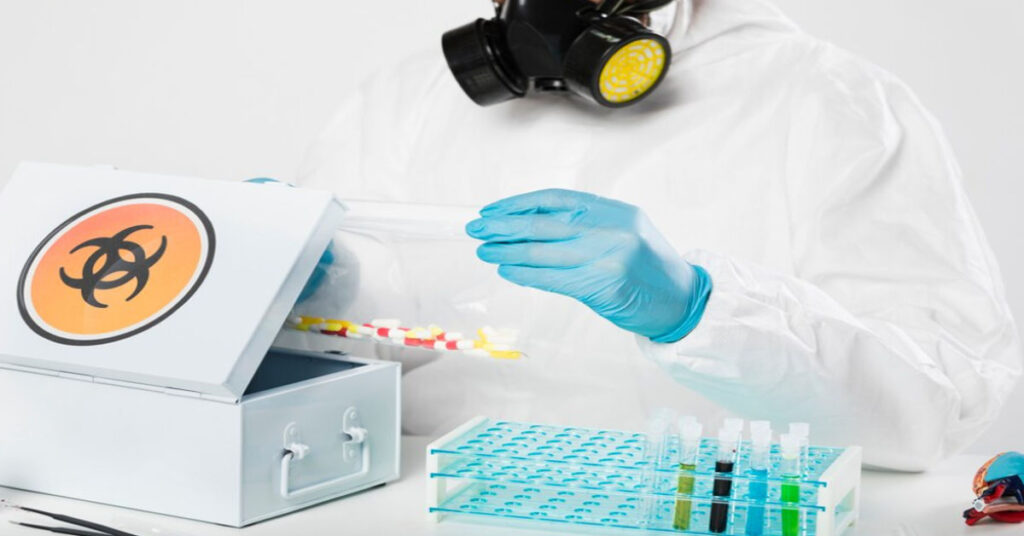
Timely and adequate medical intervention is essential for controlling symptoms and minimizing consequences in the event of an allergic response to hair coloring. This section describes the medical interventions and approaches that can be used to manage allergic responses that occur both during and after hair coloring.
Immediate Actions:
Rinse Off the Dye:
When coloring their hair, people who suffer itching, redness, or other mild symptoms can assist remove the allergen from their skin by promptly washing off the dye with lukewarm water.
Antihistamines:
You can lessen allergic reaction severity and relieve itching using over-the-counter antihistamines. There are solutions that don’t make you sleepy for people who require relief without compromising your attentiveness.
Topical Steroids:
Healthcare practitioners may prescribe topical steroids in the form of creams or ointments for moderate to severe allergic responses. These can lessen the itching, redness, and inflammation brought on by allergic dermatitis.
Corticosteroid Injections:
Healthcare providers may inject corticosteroids to treat systemic symptoms and offer quick relief when an allergic reaction is severe or extensive. Usually saved for more severe reactions, this technique needs physician monitoring.
Cool Compresses:
Cool compresses applied to the affected regions might help calm inflamed skin and lessen swelling. This straightforward action offers comfort and can support more therapeutic approaches.
Avoidance of Triggers:
Preventing additional reactions requires identifying and avoiding the specific allergens included in the hair coloring product. If someone has ever had an allergic reaction, they should switch to different goods with different formulas.
Consultation with Healthcare Professionals:
People who experience severe allergic reactions—like anaphylaxis or extensive blistering—should get help from a doctor right once. Based on the severity and nature of the reaction, consulting with medical specialists such as dermatologists and allergists can help establish the best course of action.
It’s crucial to remember that although these therapies help lessen allergic reaction symptoms, the ultimate objective is to avoid allergic responses altogether by taking preventative steps like patch testing and using hair coloring products that contain fewer allergens. The ensuing parts will delve into the possible enduring consequences of allergies in hair coloring, culminating in suggestions for a secure and delightful coloring procedure.
Long-Term Effects of Allergies in Hair Coloring
While the majority of allergy reactions to hair coloring are brief and go away with the right care, some people may have long-term problems from frequent exposure to allergens. This section explores the long-term effects and difficulties that allergies to hair coloring may cause.
Skin Sensitization:
With time, the skin may become sensitized to allergens found in hair coloring products due to repeated exposure. This implies that with each new application, people can grow more vulnerable to allergic reactions. An increased sensitivity to allergens might result in more severe allergic reactions.
Hyperpigmentation or Hypopigmentation:
After allergic responses, people may occasionally see changes in their skin’s color. The affected areas may exhibit hypopigmentation (lightening) or hyperpigmentation (darkening). The skin’s cosmetic appearance may be impacted by these potentially permanent alterations.
Scarring and Dermatological Issues:
Severe allergic responses can cause dermatological problems and scars on the skin. The texture and appearance of the skin might be affected by persistent inflammation and blistering, which can lead to the production of scars.
Psychological Impact:
Having an allergic reaction to hair coloring can have psychological effects on a person’s self-esteem and confidence. People may experience worry or become reluctant to color their hair in the future, which could negatively affect their general wellbeing.
Chronic Dermatitis:
Skin inflammation that persists over time is a hallmark of chronic dermatitis, which can be brought on by recurrent allergic responses. Long-term medicinal intervention may be necessary to control chronic dermatitis, which can be difficult to treat.
Allergen Avoidance Challenges:
Since many hair coloring products contain allergens, it can be difficult for people with a history of allergies to recognize and stay away from all possible triggers. An continuing source of stress and worry associated with hair coloring may be this continual difficulty.
Given the possible long-term consequences, it is critical to take preventative steps to avoid allergic responses, such as patch testing and using alternate hair coloring products. It also highlights how important it is to consult a specialist and keep track of your skin’s condition throughout time. Taking into account the information presented throughout, the last section will offer suggestions for a secure and pleasurable hair coloring procedure.
Conclusion and Alternative Hair Coloring Options
In summary, managing the world of hair coloring requires being aware of possible adverse reactions in addition to accepting style changes. This article has shed light on common allergens found in hair coloring products, different kinds of allergic responses, and the symptoms that go along with them. It has also looked at risk factors, allergy treatment possibilities, alternate coloring options, and preventive strategies like patch testing.
Recommendations for a Safe Hair Coloring Experience:
Patch Testing as a Standard Practice:
Always conduct a patch test before using any hair coloring product. This simple step can help identify potential sensitivities and reduce the risk of allergic reactions.
Consider Alternative Hair Coloring Options:
Explore natural and hypoallergenic alternatives, such as henna, plant-based dyes, or temporary color products. These options provide creative solutions with lower allergen content.
Consultation with Professionals:
Seek the expertise of salon professionals, especially those specializing in hypoallergenic or organic hair coloring services. Their insights can guide you toward products with fewer allergens and customized solutions.
- Immediate Action for Allergic Reactions:
If you experience itching, redness, or other mild symptoms during the hair coloring process, rinse off the dye immediately. Over-the-counter antihistamines can provide relief, and topical steroids may be recommended for more severe reactions.
Limit Frequent Hair Coloring:
Minimize the frequency of hair coloring sessions to reduce cumulative exposure to potential allergens. This is especially important for individuals with a history of allergic reactions.
Monitoring Long-Term Effects:
Be attentive to any signs of skin sensitization, hyperpigmentation, or other long-term effects. Consult with healthcare professionals if persistent issues arise.
Psychological Well-being:
Recognize and deal with any psychological effects of allergic responses. A healthy self-image can be enhanced by developing the confidence to embrace one’s natural hair color or choose alternatives.
Final Thoughts:
Skin health must come first when aiming for bold and expressive hair colors. It is possible to prevent and control allergic responses to hair coloring by being proactive, making educated judgments, and being sensitive to each person’s unique sensitivity. Those who adhere to the advice provided in this article can start a hair coloring adventure that is not only fashionable but also secure and pleasurable. Recall that the secret to a gorgeous and healthy hair coloring experience is making an informed decision.
